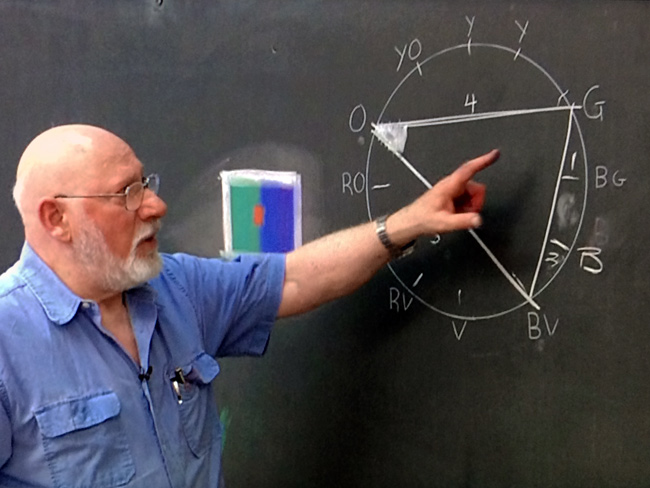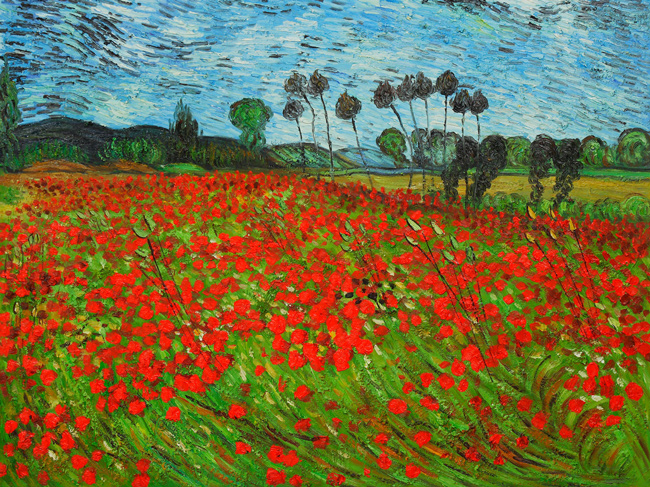Over the years my name has become linked with two methods which have become central to my approach to instruction: The Fletcher system of palette control and the Golden Section. Fletcher offers the painter an intelligently organized method of color mixing based on the principles of color theory. The Golden Section is an ancient method which establishes harmonious relationships within a design. The Golden Section is little taught these days, and, I am yet to meet anyone either using or understanding, the Fletcher, apart from associates of the Studios.
These methods are common knowledge. However, were that to suggest they were acceptable teaching aids, that conclusion would be mistaken. Today, to employ these working systems is to court criticism.
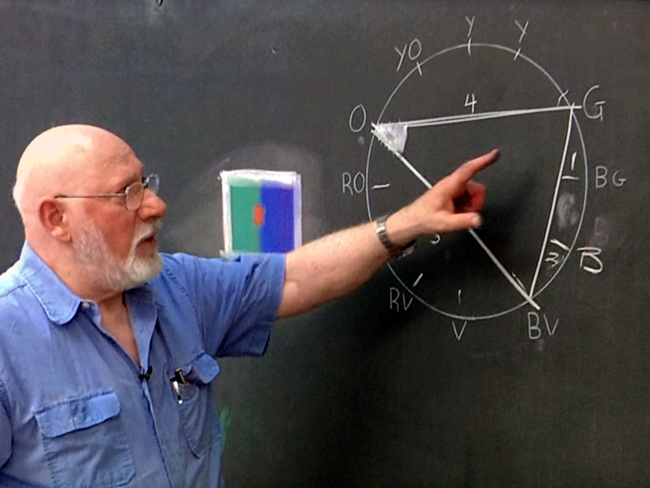
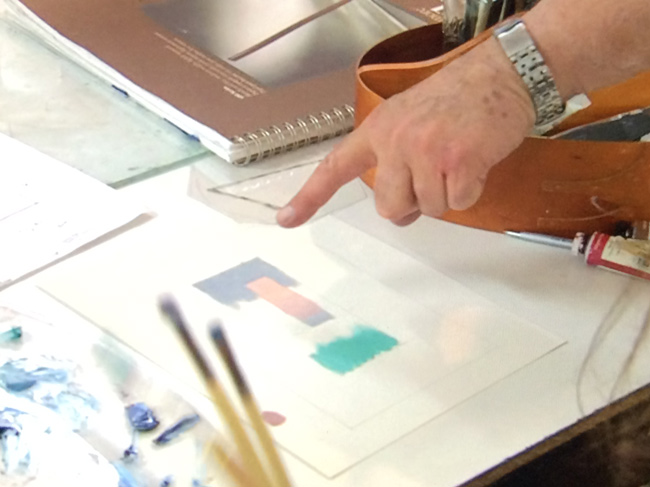
Current thinking in art teaching rejects the use of systems. I find such a view curious since the body of work produced by an artist tends to be readily recognized as stylistically united. . . and stylistic unity suggests an orderly working procedure: A system. Perhaps this fear of systems reflects a recognition of the danger of a system degenerating into a sterile repetition of slick tricks, of the sort which many commercial artists rely upon. The danger is real. Which provides us with yet another reason to admire the accomplishments of important painters, who clearly employ systems in their work.
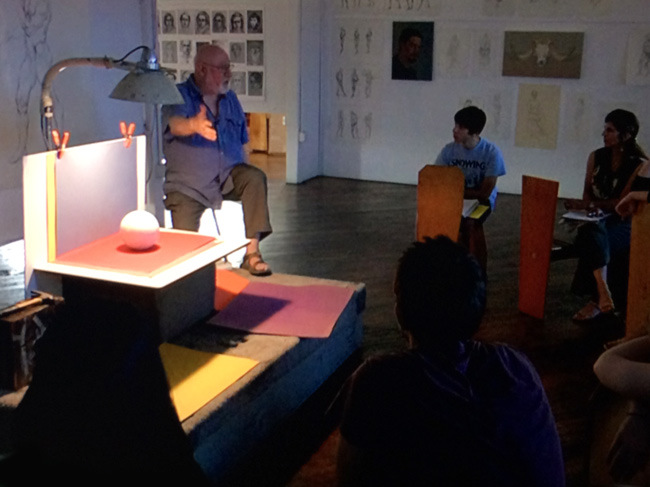
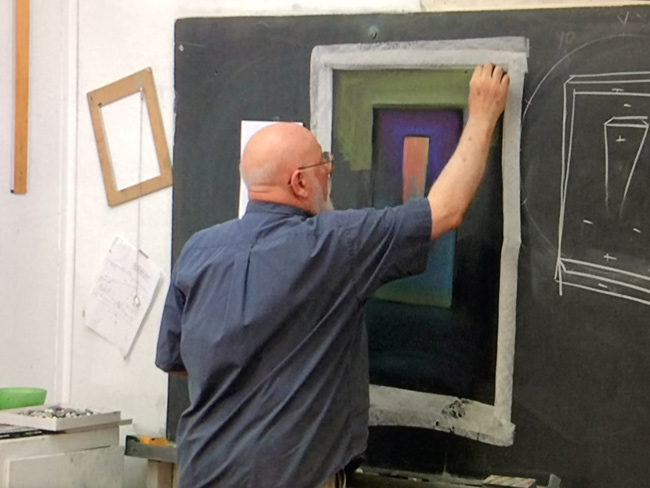
My view goes like this: A classroom situation is not the real world. A design or drawing assignment is not art. . . it is a contrived laboratory device employed by an instructor to promote learning. Therefore, every device which will further that process of learning must be deemed useful.
In addition to the Golden Section and the Fletcher, I have dozens of systematic devices which have been of great use to me, and, I hope, to those who have studied with me. My purpose is to present a wide range of information, explain it as clearly as I can and then attempt to demonstrate how the parts relate and ultimately nest as an integral whole. Any work of art is a unified statement which is enriched by its multi-faceted aspects.
Without order, without method, without a system of organization, one would be adrift on an uncharted sea of bits and pieces. I can only report my delight in having found or contrived, approaches to teaching my material; approaches which have given shape to the work which I seek to do. These systems are the pegs upon which I hang collections of ideas. These collections gain a special relatedness which thereafter allows them, in turn, to be bound to other constellations of ideas. I suspect that what I am attempting is called teaching. . . whatever, I find it demanding, fascinating and rewarding.
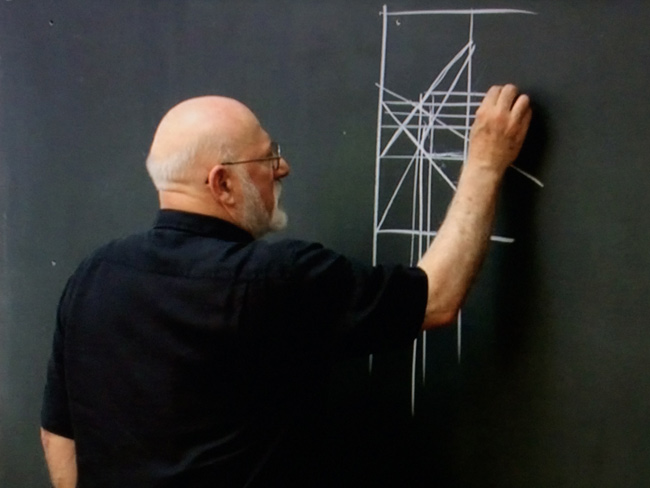
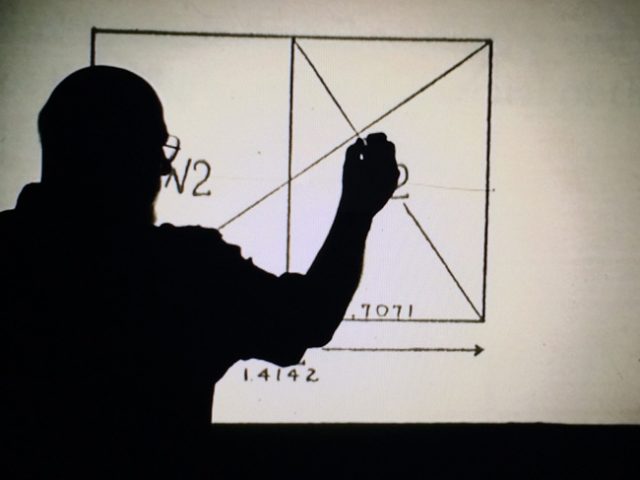
There isn’t one correct approach to teaching. Each instructor collects his experience, information and keenest interests, and, with a view to being useful, seeks to do his best. The acid test concerns one’s usefulness… not the means or the manner, or one’s eccentricities. The measure of any teacher will rest upon the accomplishments of those who studied with him.
The student with a sound grasp of his subject must enter the real world and find himself. The teacher’s task is to somehow assist in making that discovery more likely. The teacher is a bridge. All of the efforts of all of a student’s instructors were but temporary expedients, as were all of the devices, systems, and contrivances employed by those teachers.
